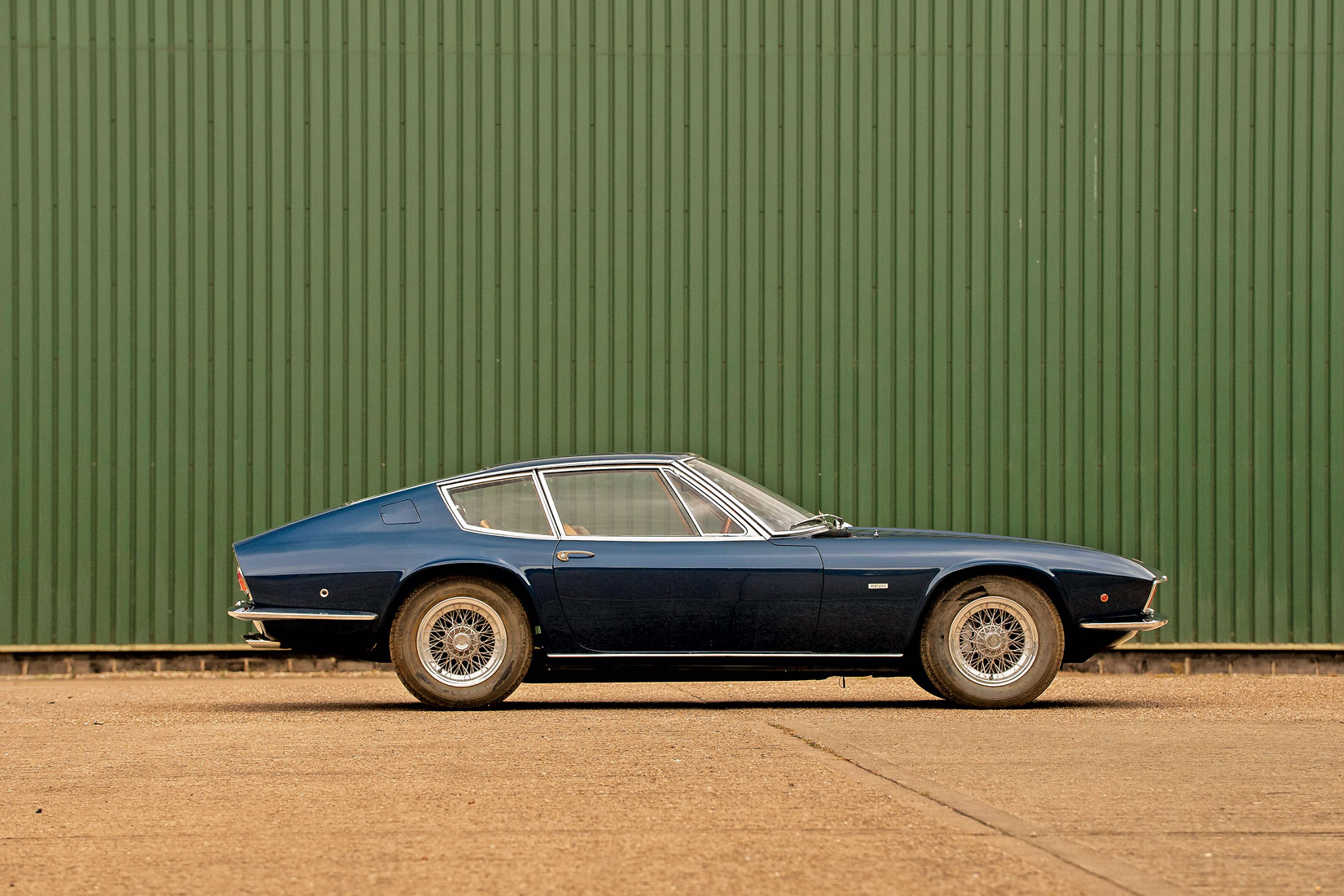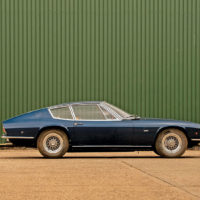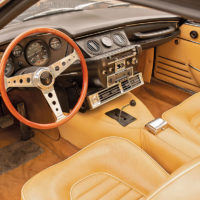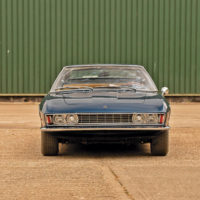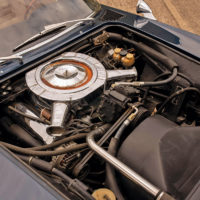SCM Analysis
Detailing
| Vehicle: | 1969 Monteverdi 375S Coupe |
| Years Produced: | 1967–71 |
| Number Produced: | 16 |
| Chassis Number Location: | On left inner fender chassis upright by steering pump |
| Engine Number Location: | Pad at top front of block inboard of left cylinder head |
| Club Info: | Monteverdi Club |
| Website: | http://www.monteverdi.net |
| Alternatives: | 1965–73 AC 428, 1965–74 Iso Grifo, 1966–76 Jensen Interceptor |
This car, Lot 134, sold for $239,129 (CHF 230,000), including buyer’s premium, at Bonhams’ Gstaad, Switzerland, sale on July 3, 2022.
Bonhams had on offer not just one but two of the tiny production run of 375s, the name deriving from the nominal output of the Chrysler 440-ci V8. I’m not sure where the catalog reference to a 7.0-liter (426-ci) version came from (perhaps the company’s Hai 450SS, an abortive supercar of 1970 that used mid-mounted 426 power), but as far as we know, all these cars were 440s.
The other Monteverdi in the sale was a 375/4, a model which I’d never stood next to before. It was enormous and badly proportioned, as if it had swallowed a piano, like a C107 Mercedes. It went cheapish, its price probably inversely proportional to its potential cost liability. Around 35 of these monsters were built.
This car, however, was an elegant thing along the lines of a Maserati Ghibli or Aston Martin DBS, and sold for almost three times its lower estimate. That it looks superficially like an AC 428 (though better resolved) is no surprise, as both were styled by Frua.
Old-school hybrid
The bare bones of history are that Swiss motor dealer Peter Monteverdi, a descendant of composer Claudio Monteverdi and a former racer, wished to build a continental-smashing GT coupe, and followed established precedents of elegant Italian coachwork paired with untemperamental and big-cubic-inch Detroit power.
The first model, the 2-seater Monteverdi High Speed 375S coupé, was launched at the 1967 Frankfurt Motor Show. It received positive reviews, though it cost more than an Aston Martin, Ferrari or Lamborghini. Later came the extended 375L and 375/4, and other variations. The cars used a steel frame provided by Stahlbau Muttenz GmbH before being bodied in Italy, with final assembly at Monteverdi’s works in Binningen, Basel, Switzerland. Fewer than 160 375s of all types were built to 1974, which includes around 100 375Ls and 35 375/4s.
Designer drama
Frua built a small number of bodies in 1968 before Monteverdi, wanting to ramp up production, turned to rival Fissore, which led to a grand falling-out. Depending on which account you believe, it seems that either Frua wanted royalties, leading Monteverdi to revamp the car to avoid payment, or Frua insisted on a restyle before Fissore could build the bodies. The later Series II Fissore 375S (six produced) has a front like a flattened Studebaker Champion with sugar-scoop headlights.
The catalog claimed that the first 10 375S models were built by Frua. The Monteverdi club agrees but its website says the bodies were built by Fissore from summer 1968; its wording “Frua by Fissore” implying that these were to the original style. This car would have been right on the cusp. There were no coachbuilder’s plates to be seen, and indeed, when Gooding & Company sold it at Pebble Beach in 2005 (SCM# 38888), it was cataloged as being bodied by Fissore, but the Monteverdi Club insists it’s a Frua production.
Around the block
There’s little history available, but it includes bills for $11,000 of restoration work from Mosier Restorations Inc. dating from 2005–06. When Gooding & Company listed it (with 20,776 miles) the catalog said, “Low original miles, extremely well-kept older restoration, rare and attractive European GT with reliable Chrysler power.” With a $95k–$125k estimate and no reserve, it sold post-block for $100,000. In February 2008, the car was offered for sale by Family Automotive Group of San Juan Capistrano, CA, and finally went to its last owner in the Middle East in 2012, where it stood unused for a decade. As with many cars that traveled the same route, it returned with most of its paperwork missing.
Showing 20,929 miles at Gstaad, it had obviously had lots of restoration over the years and presented superficially well with a decent interior, though as a portent of what might lie within, the chrome air-filter pan was going rusty. A saleroom notice added that it had never been owned by Jay Leno, as originally claimed. Apparently, he still owns his.
A home-crowd hit
Offered at no reserve and with an estimate of just CHF 70k–110k, our subject car sold for almost three times the lower amount, plus premium. That’s Ghibli money and would also buy you the best DBS V8 on the planet. (The 375/4 was estimated for more and sold for less, $116,576.) It went to a local buyer and therefore will be subject to extra duties. Swiss customs charges (duty, car tax and VAT) apply at roughly 12.5% of the purchase price, taking the final bill to CHF 258,750 ($269k) from a winning bid of $208k. Somebody really, really wanted to see a Monteverdi 375S back in Switzerland. Though it was expensive, it’s nice to see a success for the home team.
Of note: The Monteverdi Museum closed in 2016, but what’s left of the collection can be seen at the Swiss Museum of Transport in Lucerne: www.verkehrshaus.ch. ♦
(Introductory description courtesy of Bonhams.)
